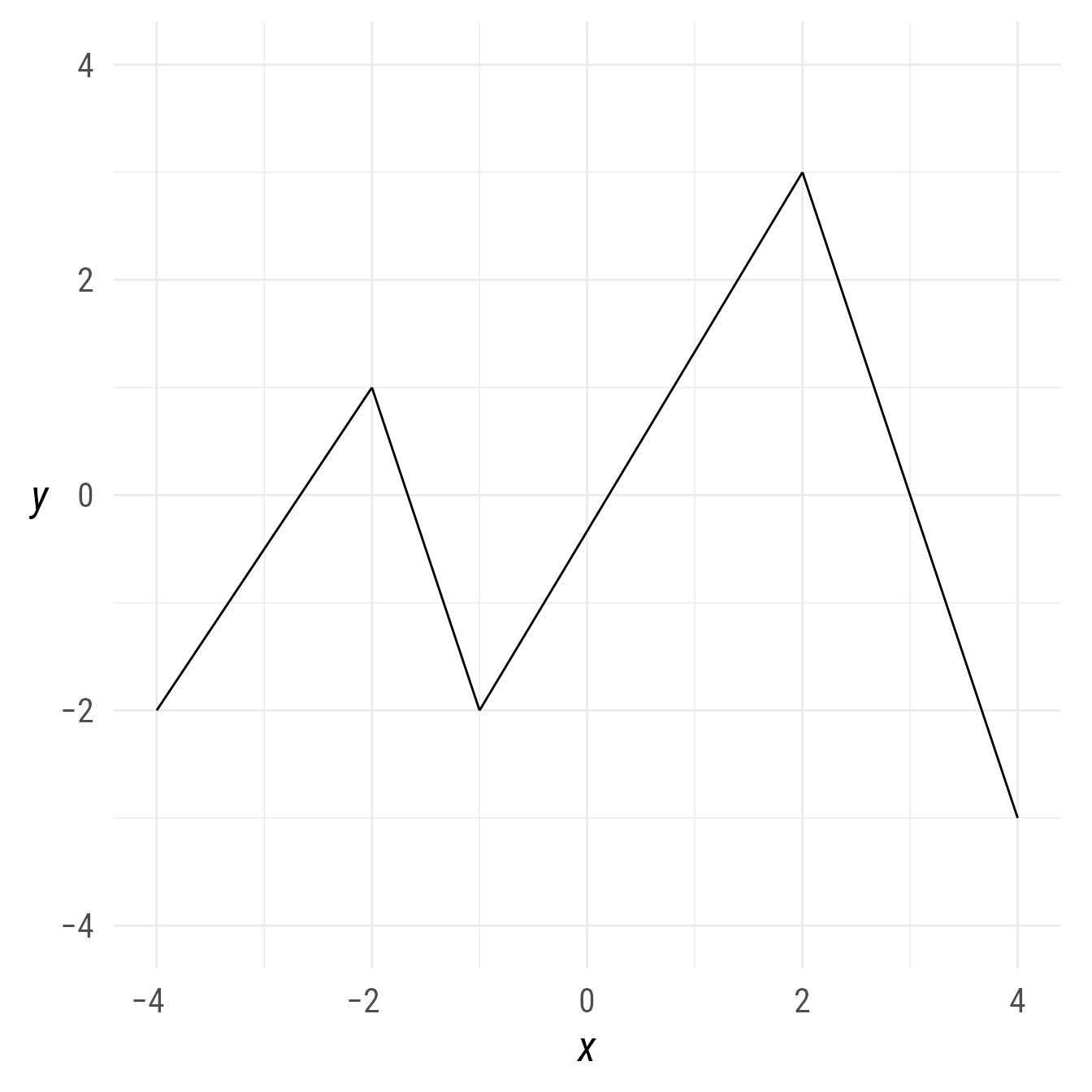library(ggdiagram)
library(ggplot2)
library(dplyr)
#>
#> Attaching package: 'dplyr'
#> The following objects are masked from 'package:stats':
#>
#> filter, lag
#> The following objects are masked from 'package:base':
#>
#> intersect, setdiff, setequal, union
library(ggtext)
library(ggarrow)
library(arrowheadr)Setup
Packages
Base Plot
To avoid repetitive code, we make a base plot:
my_font <- "Roboto Condensed"
my_font_size <- 20
my_point_size <- 2
# my_colors <- viridis::viridis(2, begin = .25, end = .5)
my_colors <- c("#3B528B", "#21908C")
theme_set(
theme_minimal(base_size = my_font_size, base_family = my_font) +
theme(axis.title.y = element_text(angle = 0, vjust = 0.5))
)
bp <- ggdiagram(
font_family = my_font,
font_size = my_font_size,
point_size = my_point_size,
linewidth = .5,
theme_function = theme_minimal,
axis.title.x = element_text(face = "italic"),
axis.title.y = element_text(
face = "italic",
angle = 0,
hjust = .5,
vjust = .5
)
) +
scale_x_continuous(labels = signs_centered, limits = c(-4, 4)) +
scale_y_continuous(labels = signs::signs, limits = c(-4, 4))Specifying a segment
A segment is a portion of a line between two points.
p1 <- ob_point(-3, -1)
p2 <- ob_point(3, 3)
s1 <- ob_segment(p1, p2)
bp + s1 + p1 + p2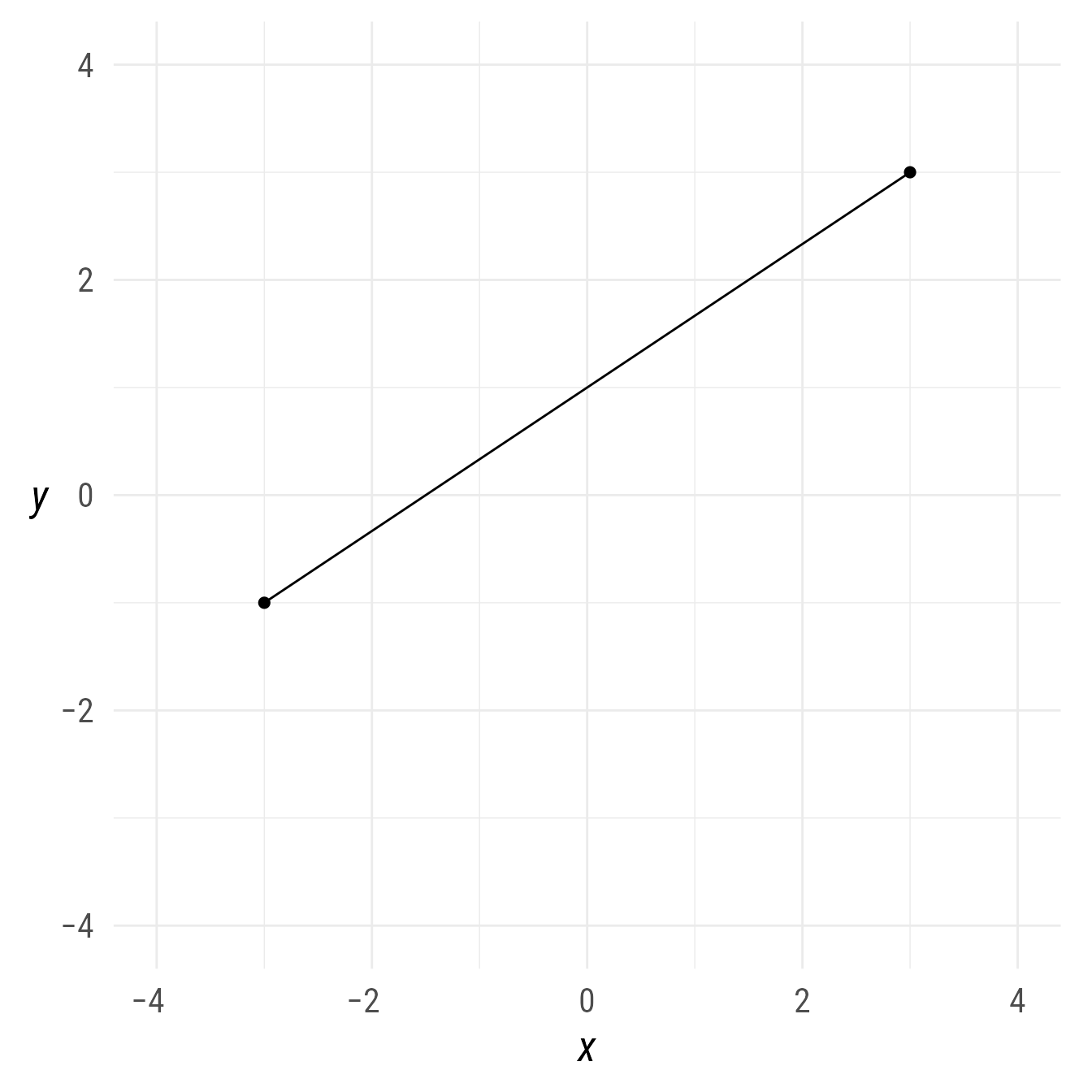
Features of a segment
Distance between points
s1@distance
#> [1] 7.211103Alternately:
distance(s1)
#> [1] 7.211103Line passing through the segment
The line that passes through the segment contains information about the segment, such as its slope, intercept, or angle.
To access the line that passes between both points:
s1@line
#>
#> ── <ob_line>
#> # A tibble: 1 × 6
#> slope intercept xintercept a b c
#> <dbl> <dbl> <dbl> <dbl> <dbl> <dbl>
#> 1 0.667 1 -1.5 -4 6 -6
s1@line@slope
#> [1] 0.6666667
s1@line@intercept
#> [1] 1
s1@line@angle
#> [1] "34°"Code
bp +
s1@line |> set_props(color = "royalblue4") +
s1@midpoint(position = c(0, 1))@label(
polar_just = ob_polar(s1@line@angle + degree(90), 1.5),
plot_point = TRUE) +
ob_label(c(equation(s1@line),
paste0("Distance = ",
round(s1@distance, 2))),
center = midpoint(s1),
vjust = c(-.2, 1.1),
angle = s1@line@angle)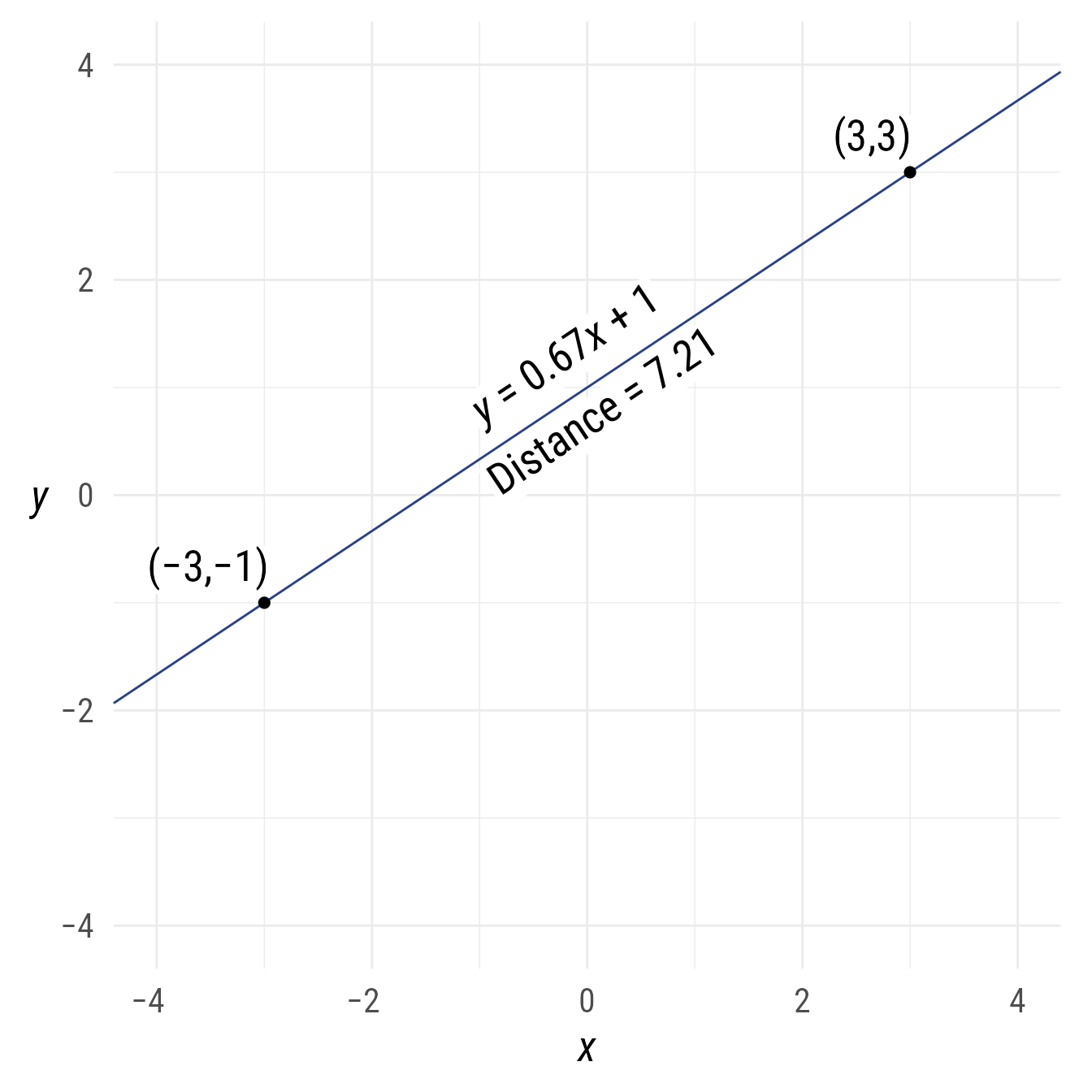
Midpoints
By default, the midpoint function’s position argument is .5, which finds the point halfway between the point of a segment:
s1@midpoint()
#>
#> ── <ob_point>
#> # A tibble: 1 × 2
#> x y
#> <dbl> <dbl>
#> 1 0 1Code
bp +
s1 +
s1@midpoint()@label("Midpoint", hjust = 0, vjust = 1) +
s1@midpoint(c(0, .5, 1))@label(
plot_point = TRUE,
hjust = 1,
vjust = 0)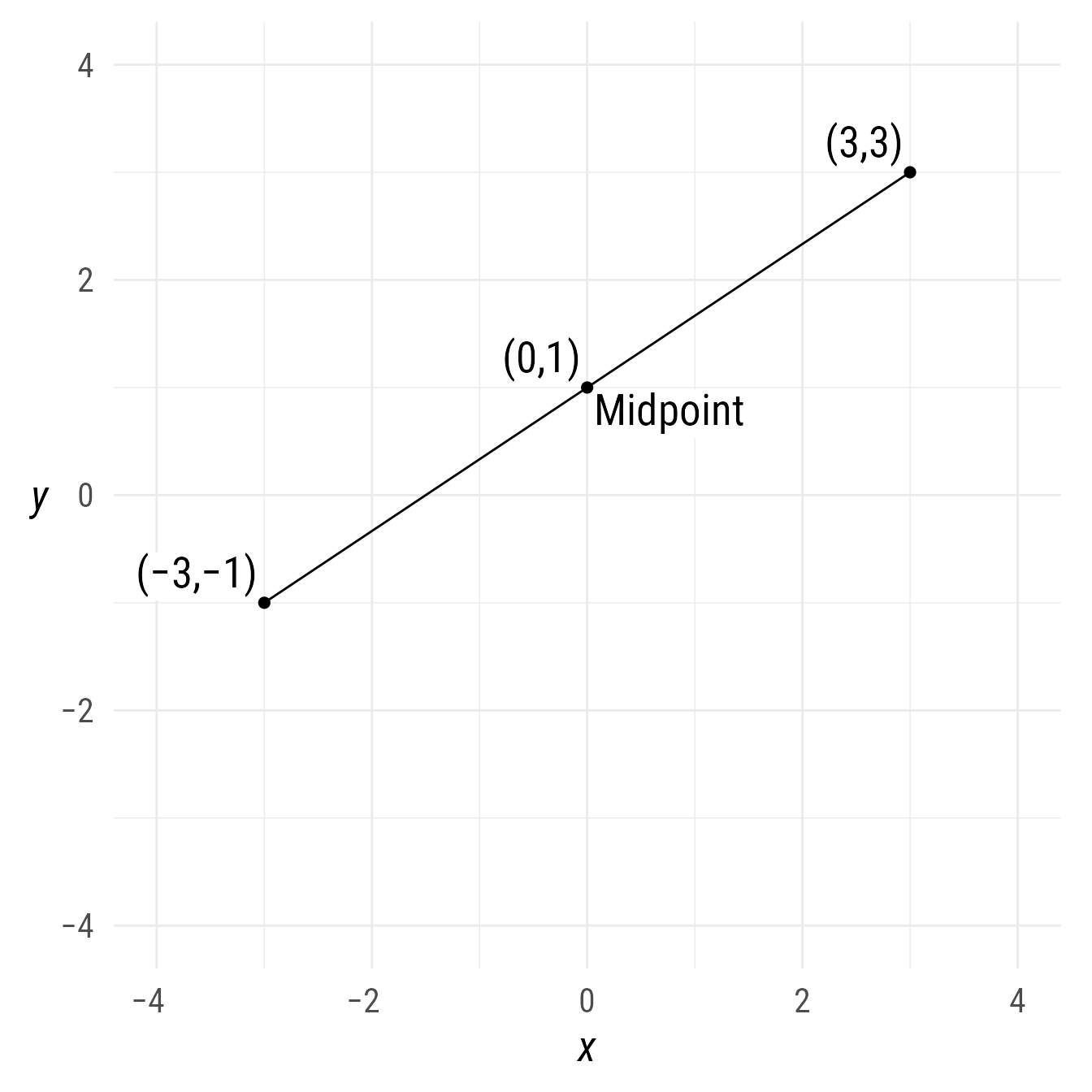
To find the midpoint 25% of the distance between the endpoints of segment:
s1@midpoint(position = .25)
#>
#> ── <ob_point>
#> # A tibble: 1 × 2
#> x y
#> <dbl> <dbl>
#> 1 -1.5 0Code
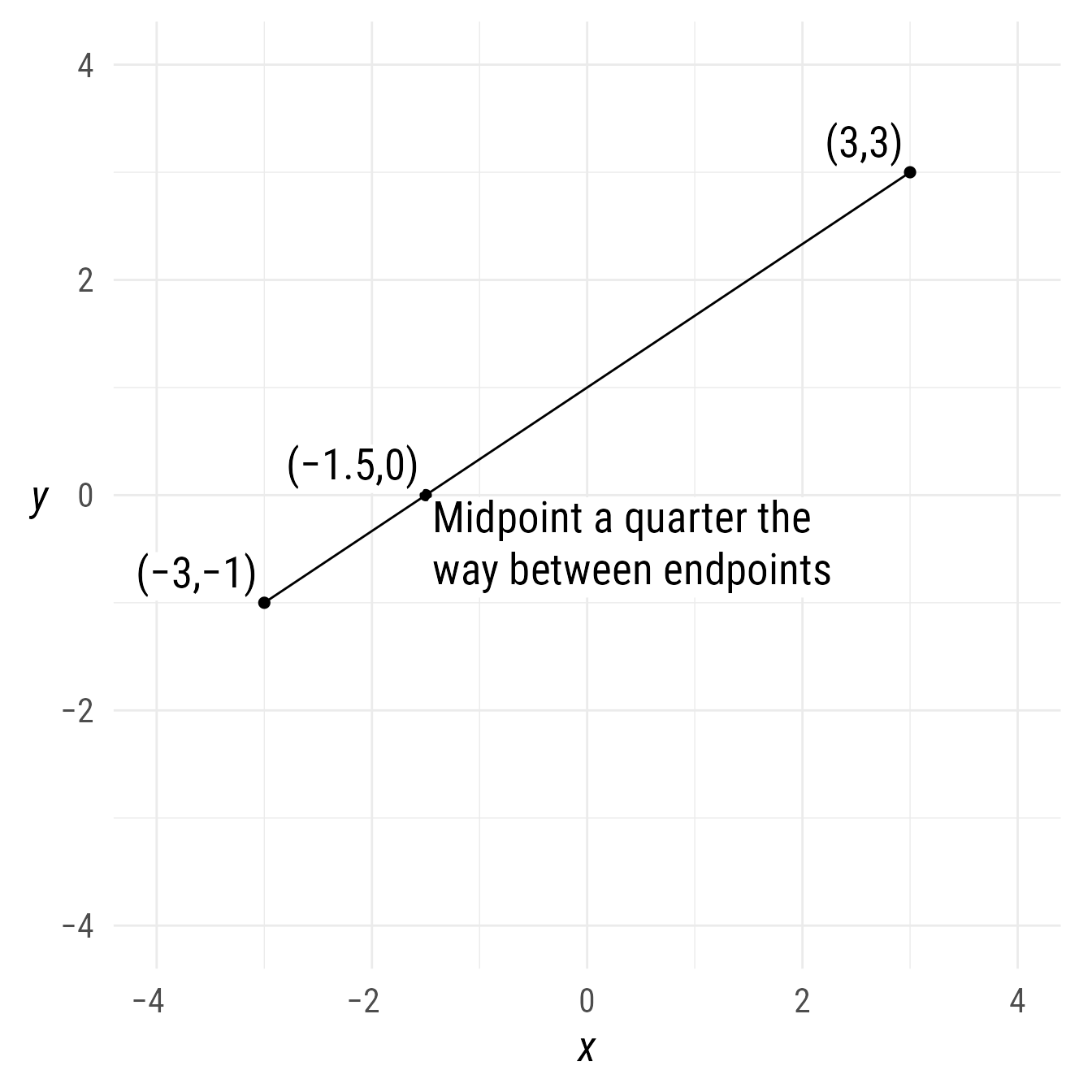
Multiple midpoints can be specified:
bp +
s1 +
s1@midpoint(seq(0, 1, .2))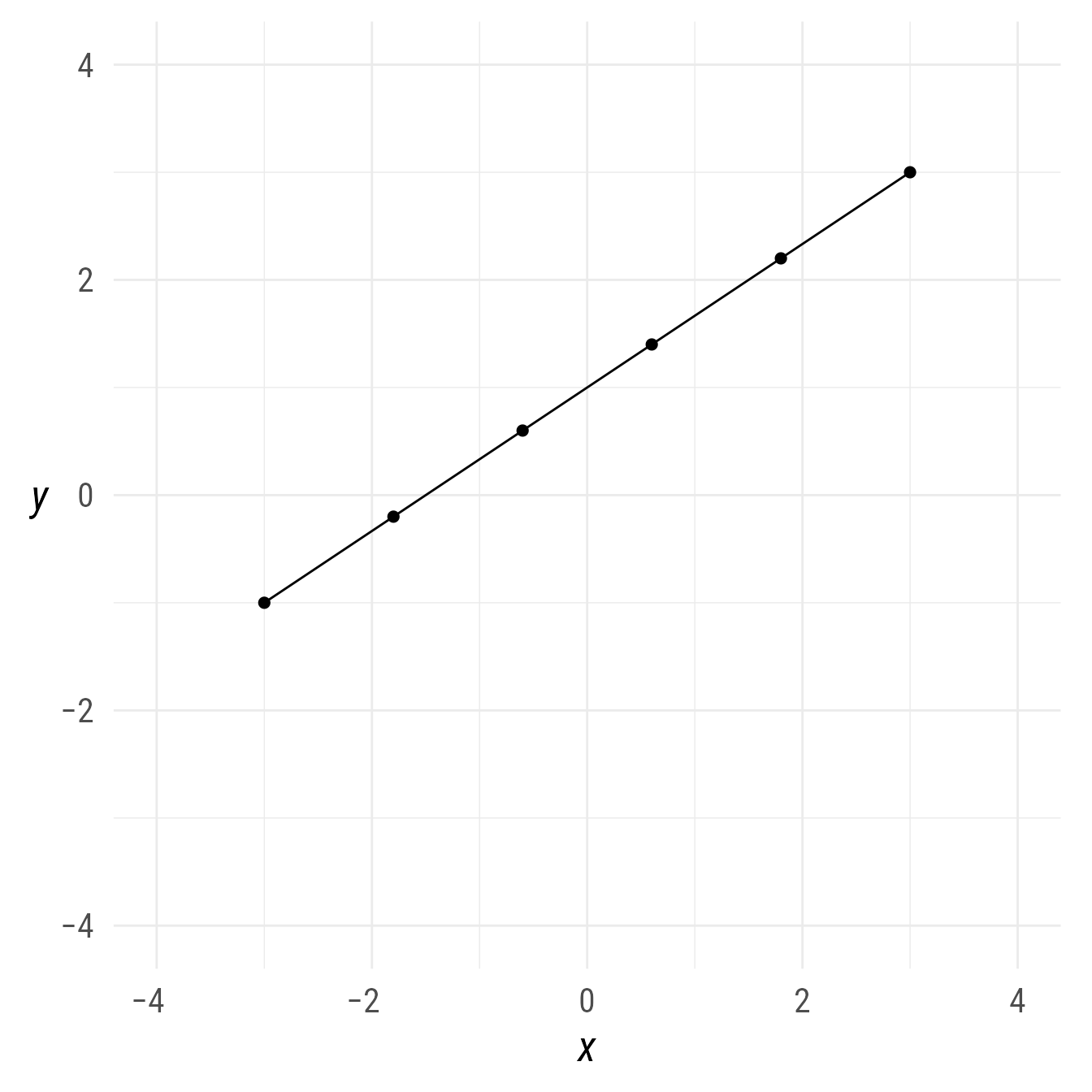
A quick way to get the endpoints of a segment is to specify “midpoints” at positions 0 and 1:
bp +
s1 +
s1@midpoint(c(0, 1))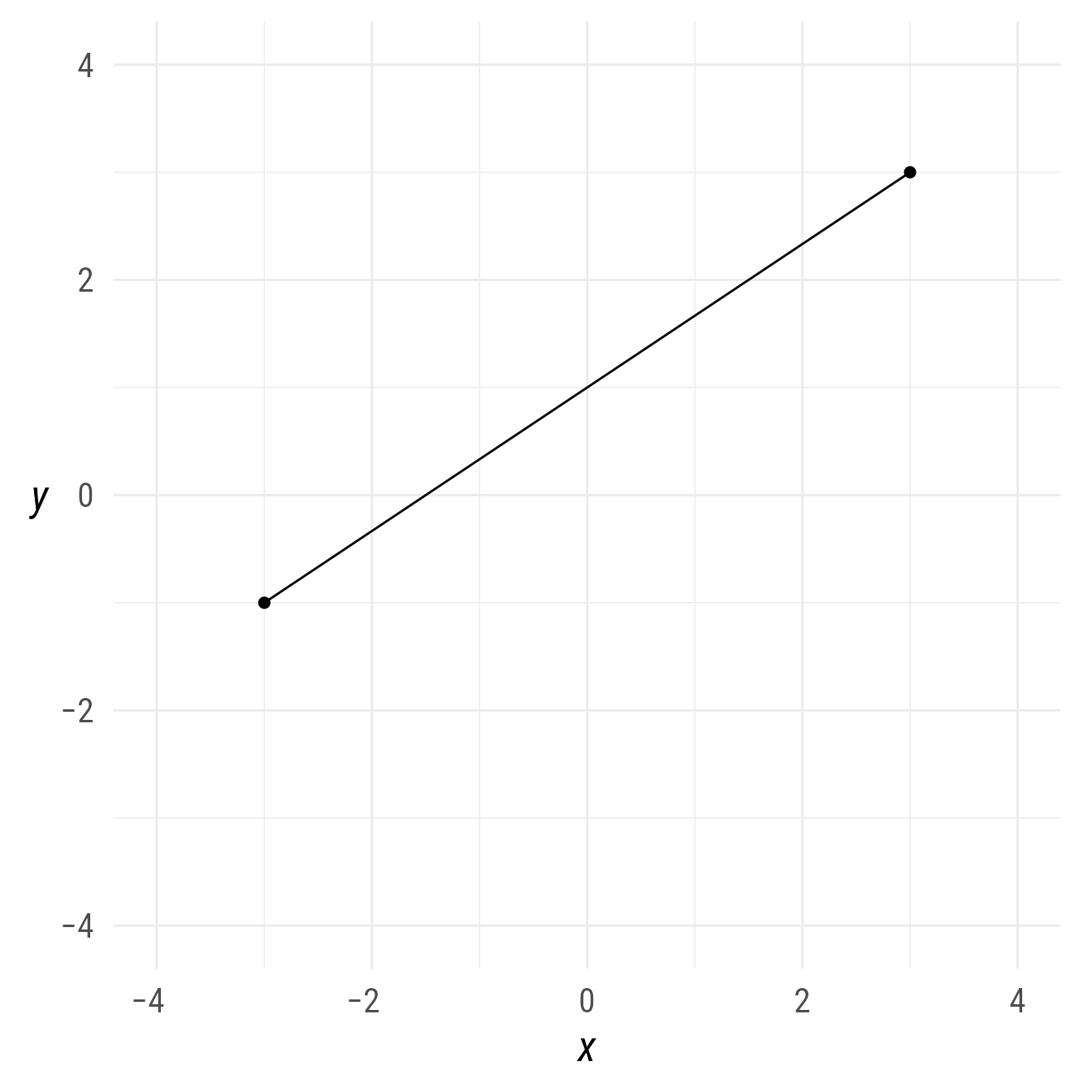
midpoint property.
Segment chains
If a point object with multiple points is placed in the p1 slot but the p2 slot is left empty, a series of segments chained together will be created.
bp +
ob_segment(
ob_point(x = c(-4, -2, -1, 2, 4),
y = c(-2, 1, -2, 3, -3)))